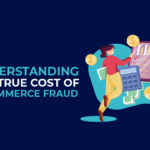The future of payments is far beyond a handshake at POS
The beginning of a beautiful friendship
In the old world the payment part of a transaction was a straightforward matter, a payment made in exchange for goods in a distinct moment in time – imagine two people shaking hands in the market. This seemed to be the case in ecommerce as well, with credit card transactions in place of cash. The evolution of payments and the rise of new forms of fraud such as Chargeback Fraud determine that it is no longer so. These days a payment indeed starts at the point of sale but will be final and secured only at a much later phase where last installment was made or the chargeback or return option expires. Online merchants should understand the opportunities of monitoring the relationship with their customers during that time frame and leverage it to make better business decisions.
New “Starched” payment models are on the rise
Globalization has quickly exposed merchants to higher competition where product differentiation is no longer enough. One of the ways to stand out had been by business model differentiation leading to a constant evolution of payments. No longer a handshake at a deterministic moment in time, we now need to consider payment a continuous relationship only starting at POS. New payment models now offering longer relationships where payment is either differed or split are on the rise. Solutions like split it or Buy Now Pay Later are offered by merchants to their customers as means of differentiation and in many other cases simply because it is the new standard.
Merchants should monitor, Post-Payment relationship with their customers
Merchants shouldering most of the fraud liability along these longer timelines, use risk analysis tools that limit themselves to a snapshot analysis of information available at POS the site of the Handshake. It means they completely ignore all information revealed during the payment relationship far after POS. Instead of a snapshot, online sellers need a “video” capturing and analyzing the evolution of risk long after the initial risk assessment has been made.
For example:
- Something is purchased and paid for later; what happens when customer care receives a request for a change of delivery address, does this change the risk evaluation? It seems obvious that such information is relevant to risk after the payment and should be collected and factored.
- A payment was split into installments and customers’ satisfaction drops; they might turn into friendly fraudsters.
- Or simply the customer tried to cancel an order with no success and is pushed towards falsely denying the transaction.
- A recurring payment subscriber is unhappy with a deal and turns to disputing the charge.
Payment risk tools evolve beyond a “snapshot” at POS
Many merchants shore the dynamic aspect of risk by shifting liability through 3D Secure or other forms of insurance, but these are costly measures with negative effects on the topline. FUGU with its innovative post – payment risk monitoring solution offers a way to gain visibility on payment relationship, spreading sensors along the delivery and payment timeline, continuously analyzing signals captured and anticipating fraud on a sequential time award basis. FUGU with post-payment monitoring capabilities is the only solution in the market who can alert merchants when:
- Customers update delivery address after the payment, this could have a direct impact on the risk analysis and it is logged and factored.
- Customer with a split payment contacts customer care with a complaint, this could lead to a dispute. Fugu logs and factors the action as well as its embedded data, alerting to risk while shoring it with further documentation.
- Customer consulting the return policy after delivery, could be a sign of customer considering turning to friendly fraud, logging and factoring the visit can also trigger proactive measures that mitigate and deter fraud.
- A recurring charge generates recurring touch points with the customer; these are analyzed and factored to provide a dynamic view of long-term risk.
All these offer merchants ways to mitigate that risk without negatively affecting conversion rates. (checkout our blog post)




